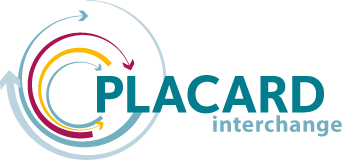At PLACARD, we aim to promote foresight activities and so support stronger ties, cooperation and collaboration between disaster risk reduction (DRR) and climate change adaptation (CCA). Our 2016 workshop in Vienna focused on using the megatrend methodology and followed up with a policy brief as we deepened our knowledge.
Markus Leitner and Julia Bentz recently took part in an ERA-LEARN training course on Foresight in Public to public partnerships (P2Ps), which focused on Strategic Research and Innovation Agendas (SRIA) for Joint Programming Initiatives (JPIs) using the case of JPI Urban Europe.
Although PLACARD does not specifically focus on JPI and SRIA, some of the training elements could foster CCA and DRR collaboration and promote foresight activities, providing added value to both communities.
Foresight can be explained using a process circle in five phases, based on Miles (2002) and Popper (2008).
Figure 1: Systemic look at Foresight process by Ian Miles (2002) who outlined five complementary phases. Redrawn from Dr Rafael Popper, slide 4.

We were guided through the first 3 phases of a foresight process through interactive gaming and roleplay exercises. This demonstrated the difficulties encountered in reality where the aim is to develop processes in a participatory way. As in a genuine policy process, participants came from very different backgrounds and with a range of prior knowledge, highlighting the importance of consistent knowledge provision for the exercise. Participants did not reach a consensus on when and how to involve stakeholders in the process, and indicated the risk of stakeholder fatigue if they are over-consulted. The importance of good facilitation in any process became evident!
At PLACARD, our aim is to provide strategic insight as well as practical know-how on how CCA and DRR communities can integrate foresight activities in their policy processes, and thus improve coherence between them.
The Foresight process – application and reflections
Foresight is a systematic, participatory, prospective and policy-oriented process (Popper, 2011). The demand for know-how on foresight and forward-looking activities has grown, partly due to functions that support policymaking (Da Costa et al.):
- Informing policy
- Facilitating policy implementation
- Embedding participation in policymaking
- Supporting policy definition
- Reconfiguring the policy system
- Symbolic function
Focusing on the process circle, different methods can be applied, depending on the desired outcome, the targeted group and the degree of uncertainty of the available information.
Pre-foresight or scoping: objectives and the time-horizon are defined, usually more than 10 years. The scope can be geographical, sectoral or multi-level, as in the case of CCA and DRR.
Recruitment: an analysis of all players and interested or connected stakeholders based on criteria such as relevance, relation intensity and potential conflicts. The challenge for CCA and DRR is that actors vary from local to global and from a range of disciplines such as policy, research, public administration and practice.
Generation: a broad portfolio of traditional and creative methods can be applied to combine knowledge, analyse and synthesise new information and visions for the future. Within the foresight training we looked at megatrends as drivers of future change. This relates to the approach applied at our first PLACARD Foresight workshop in October 2016 – see our background paper (pdf, 4.6 MB).
Action: identify possible futures for each driver – in this case, considering the megatrend approach.
What does this mean for CCA and DRR?
Once an analysis of possible futures has been completed, they can be described in storylines or narratives to enable a clearer vision of how the future might actually function. Storylines can be developed for business as usual, best or sustainable, and worst case scenarios, ensuring they are plausible and do not contradict each other.
For the CCA and DRR context, we have begun work on developing and describing narratives and aligning them for both communities, and specifically creating storylines for urban settings.
Visioning and narratives that are focused on a single, ideal future, can be compelling and mobilising, ultimately leading to a reduced vulnerability to climate-related hazards and thus a resilient society and system.


